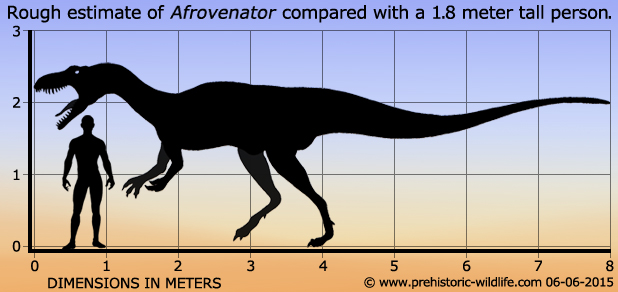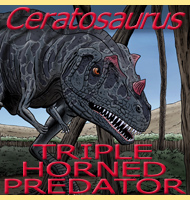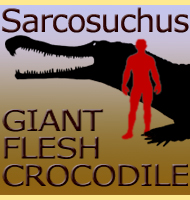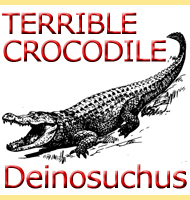


Afrovenator

Name: Afrovenator
(African-hunter).
Phonetic: Af-ro-vee-nay-tor.
Named By: Paul Sereno, Jeffrey Wilson, Hans Larsson,
Didier Dutheil, and Hans-Dieter Sues - 1994.
Classification: Chordata, Reptilia, Dinosauria,
Saurischia, Theropoda, Tetanurae, Megalosauridae (sometimes reffered to
as Torvosauridae).
Species: A. abakensis (type).
Type: Carnivore.
Size: 7-8 meters long.
Known locations: Africa, Niger, Abaka, Tiouraren
Formation.
Time period: Generally considered to be of the
Hauterivian to Barremian ages of the early Cretaceous. However further
study of the sediments at the Tiouraren formation suggest that they
actually represent the Bathonian to Oxfordian stages of the mid
Jurassic.
Fossil representation: A single, almost complete
skeleton. Lower jaw, parts of the skull, some vertebrae, some ribs and
parts of pelvis missing. Fore and hind limbs are mostly complete.
Afrovenator
is one of the most complete theropod dinosaurs so far discovered in
Africa, the harsh environmental conditions of which can quickly erode
fossils exposed to the elements. Since this time Afrovenator
has had
a muddled taxonomic history with it being described as a relative of
Spinosaurus,
Eustreptospondylus,
Dubreuillosaurus,
Megalosaurus
and even Allosaurus.
Today Afrovenator is placed within the
Megalosauroidea, although the exact placement has varied depending
upon the study and author.
There
was not a huge variation between different genera’s of large theropods
during the late Jurassic, but Afrovenator is
noted for having a
particularly long humerus which would have given the arms of
Afrovenator more reach. Reconstruction shows that Afrovenator
was
also a lightweight hunter built more for speed.
Another
dinosaur from the same formation as Afrovenator is
the sauropod
Jobaria
and while direct evidence is lacking, it’s not impossible that
Afrovenator may have hunted these sauropods,
particularly smaller
juveniles that would have been easier for a predator Afrovenator’s
size
to handle.
Further reading
- Early Cretaceous dinosaurs from the Sahara. - Science
266(5183):267-271, - P. C. Sereno, J. A. Wilson, H. C. E. Larsson, D.
B. Dutheil & H.-D. Sues - 1994.
----------------------------------------------------------------------------
Random favourites

|
 |
 |
 |




